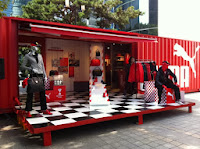The recent spate of messaging by the online Retail majors hinges on reassuring the shopper that it is very easy to return or replace what has been purchased.
This is a core shopper expectation which is catered to very efficiently by the stand-alone, neighborhood store. Interestingly modern retail formats including eTailers are still struggling to establish trust on this front. This is a very critical shopper behavior aspect and some of my earlier posts on this topic can be viewed by Clicking HERE
I had a flashback to the late 90s, when the RPG Foodworld chain of supermarkets was trying to redefine the grocery and food shopping behavior. This involved addressing several key mind blocks and shopper resistance aspects; hassle free replacement being one of the most important amongst them.
“Replacement Guarantee” was an initiative to address this important issue and it involved a holistic approach which included messaging, internal processes as well as staff education and training. This had a very positive impact which was reflected in the sales increase as also the basket penetration of several core categories of products.
Coming to the present times the two recent advertisements by Amazon and Flipkart are focusing on the ease of return and replacement. These two advertisements drive home the message effectively.
This is a core shopper expectation which is catered to very efficiently by the stand-alone, neighborhood store. Interestingly modern retail formats including eTailers are still struggling to establish trust on this front. This is a very critical shopper behavior aspect and some of my earlier posts on this topic can be viewed by Clicking HERE
I had a flashback to the late 90s, when the RPG Foodworld chain of supermarkets was trying to redefine the grocery and food shopping behavior. This involved addressing several key mind blocks and shopper resistance aspects; hassle free replacement being one of the most important amongst them.
“Replacement Guarantee” was an initiative to address this important issue and it involved a holistic approach which included messaging, internal processes as well as staff education and training. This had a very positive impact which was reflected in the sales increase as also the basket penetration of several core categories of products.
Coming to the present times the two recent advertisements by Amazon and Flipkart are focusing on the ease of return and replacement. These two advertisements drive home the message effectively.
It is interesting to note some subtle and sublimal messaging in both these advertisements and they do raise two important questions in my mind as a retailer.
- Both the advertisements show an elderly person expressing concern about return and replacement. They are both reassured by someone who is much younger. Is easy return/ replacement a concern only for Gen X / older shoppers? The counter point could be that this a concern for the Gen Y and Gen Z but the advertisement is trying to drive home a message that their Gen Y and Gen Z customers do not face this problem. In that context are reference groups such a large influence for these shoppers?
- Retail brand building is built on trust which can happen only during the transactional experience. Even today, the return/ replacement in most modern formats and eTailers are definitely not up to the mark. In that context will messaging alone work? What process changes have these eTailers instituted to ensure that the real experience lives up to the expectations created through the advertisements?












